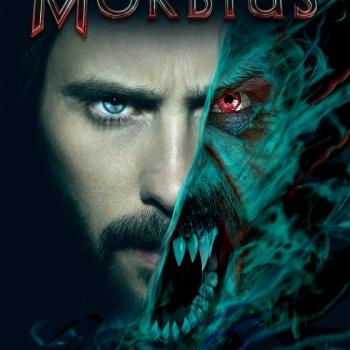Review of Miracle on 34th Street, Directed by George Seaton
By ALEXIS NEAL
Young Susan Walker is an intensely practical child. Her mother Doris has only ever told her the truth—her childhood has been uniformly free of such frivolous and fictitious nonsense as fairy stories, happily-ever-afters, make believe, and most importantly (for our purposes, anyway): Santa Claus. And Doris is quite satisfied with this state of affairs. It’s best to be realistic, after all—saves wear and tear on the emotions. Fantastic thoughts and dreams lead only to disappointment and heartache, as her divorce proved all too clearly. But all that starts to change when Doris, charged with organizing the famous Macy’s Thanksgiving Day Parade, has to scramble for a last-minute replacement to play Santa. The jolly looking elderly chap she hires winds up being so good at the job that he is immediately hired to play Santa at Macy’s. When this lovable gent claims to be the really real Santa (or Kris Kringle, as he likes to be called), Susan is in a pickle. For his part, Kris is determined to convince both Doris and Susan that he’s the real thing. With the help of the dashing young attorney in the next apartment, Kris does his darnedest to bring some magic into the lives of the Walker women. But just when things seem to be going well, Kris finds himself carted off to Bellevue—after all, if he believes he is Santa, he must be crazy. Now Kris and his attorney must convince the world that he is who he claims to be … but can he ever convince Doris and Susan?
This 1947 film deserves its reputation as a Christmas classic. Like many of the best Christmas movies (cough*DieHard*cough), it was actually released during the summer in order to capitalize on the warm weather crowds. Not only does it boast a killer cast, including a luminous Maureen O’Hara as Doris and Natalie Wood in her breakout performance, but as near as I can figure, it’s the award-winningest of all the Christmas movies, with four nominations (including one for Best Picture), leading to three wins—a Best Supporting Actor statuette for Edmund Gwenn (as Santa) and one for both the original novelist and the screenwriter. (It’s a Wonderful Life, released six months earlier, netted five nominations, including the big three—Best Picture, Best Director, and Best Actor, all of which were swept by The Best Years of Our Lives—but no wins.)
Miracle on 34th Street is, in many ways, a quintessential example of the heart-warming ‘Christmas’ movie. There isn’t even a whiff of the real Christmas story, of course. That would be too much to ask. Instead, it celebrates Christmas by decrying selfish commercialism and encouraging kindness and goodwill—though it is worth noting that much of the ‘progress’ is itself motivated by pure, unadulterated self-interest. For example, Mr. Macy endorses Kris’s new policy of sending shoppers elsewhere if Macy’s cannot supply their needs because he believes that it will benefit him to be perceived as kind and customer-oriented. Gimbel follows suit so as not to miss out on the public relations benefits of this ‘kindness.’ The two retail giants compete for the role of generous benefactor not because they actually are generous, but because they wish to appear generous in order to receive a financial benefit. And Macy later defends Kris in court not because he actually believes his claims, but because to do otherwise would be bad for business. Similarly, the judge who presides over Santa’s trial is reluctant to lock Kris away not because it would be unjust to do so, or because of any desire to uphold the ‘spirit of Christmas’, but because he fears it would hurt his chances of re-election. Thus, there is a broad streak of humorous skepticism behind this touchy-feely tale, which gives the story a depth and complexity that is lacking in much of the usual holiday treacle.
But Miracle on 34th Street is more than just an exhortation to kindness and generosity. It has quite a bit to say about faith. More than one character defends the importance of faith, which is defined here as ‘believing something even when common sense tells you not to.’ The idea is that faith flies in the face of reason. This is, of course, worlds apart from the Christian definition of faith, which is supported, not hindered, by reason. Not that faith and reason are synonymous. Faith is being certain of what we do not see (Hebrews 11:1)—it goes further than reason, but not against it. We love God with our minds as well as our hearts. God did not just proclaim Himself God over Israel; He demonstrated His power and authority. Christ proved that He was indeed the God-man by performing countless miracles. And after He died on the cross for our sins and God raised Him from the dead, He appeared to His disciples—they saw Him and felt His wounds. Even today, when large-scale miracles seem to be fewer and farther between, God is still revealing Himself to our minds—through science and nature and, most of all, His Word, which we are to study with an eye to understanding it. History is littered with intellectual giants who wrestled with theology questions. We are not to unplug our brains at the church doors. Instead, we bring them with us and use them to glorify the God who made them—and us—as an admittedly pale reflection of His own supreme Reason.
 And really, Miracle on 34th Street is just talking out of both sides of its mouth anyway. What it says and what it does are two different things. Just as the Christmas spirit showed by many characters was just commercialism in disguise, so too this elevation of faith above reason is similarly misleading. For, you see, Kris’s claims are not wholly unsubstantiated. His character is utterly unique—he is kinder and more generous and joyful than anyone Doris and Susan have ever met. He is able to pass every psychological test with ease, and the implication is that he is wholly mentally sound (and by far the least maladjusted individual in the whole movie). Those who accuse him of mental instability must believe him possessed of an extraordinarily narrow mental ailment. They believe Kris to be crazy for one reason and one reason alone: because they assume (but cannot prove) that there is no such person as Santa Claus. Then, too, there is his mysterious ability to sing to a little Dutch girl in her own language. He has his own fancy suit. He knows where to shop for every toy on every child’s list. And in the midst of defending his own sanity and proving himself to his new friends, Kris still finds the time to give Susan the one thing she wanted most—a home.
And really, Miracle on 34th Street is just talking out of both sides of its mouth anyway. What it says and what it does are two different things. Just as the Christmas spirit showed by many characters was just commercialism in disguise, so too this elevation of faith above reason is similarly misleading. For, you see, Kris’s claims are not wholly unsubstantiated. His character is utterly unique—he is kinder and more generous and joyful than anyone Doris and Susan have ever met. He is able to pass every psychological test with ease, and the implication is that he is wholly mentally sound (and by far the least maladjusted individual in the whole movie). Those who accuse him of mental instability must believe him possessed of an extraordinarily narrow mental ailment. They believe Kris to be crazy for one reason and one reason alone: because they assume (but cannot prove) that there is no such person as Santa Claus. Then, too, there is his mysterious ability to sing to a little Dutch girl in her own language. He has his own fancy suit. He knows where to shop for every toy on every child’s list. And in the midst of defending his own sanity and proving himself to his new friends, Kris still finds the time to give Susan the one thing she wanted most—a home.
(An aside: It’s worth noting that Susan’s ‘prove your existence by giving me what I want’ approach to faith is less than ideal. But Santa is not God—Santa exists for one purpose and one purpose alone: to give (good) children what they want. Thus what is admittedly a fairly selfish demand is in actually a request that Kris prove himself by being who he claims to be—‘show me you’re Santa by doing what Santa does.’ In other words, she has faith because Kris shows himself faithful.)
So while Doris and Fred (the attorney) seem to extol faith as an end in itself, in the absence of or even in direct contradiction to reason, Susan seems to see things as they really are, believing Kris not simply because it’s good to believe in things, but because all the evidence points to him being who he says he is.
_______________________________________________________________
Alexis Neal is an attorney in the Washington, D.C., area. She regularly reviews young adult literature at www.childrensbooksandreviews.com and everything else at quantum-meruit.blogspot.com.












